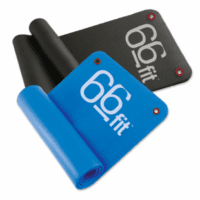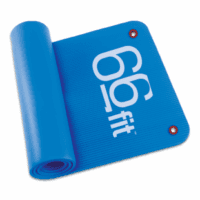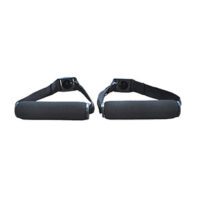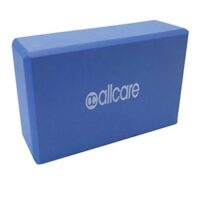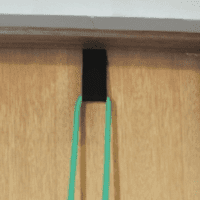Jumping Injuries
Article by John Miller

Jumping Injuries
Jumping injuries often occur in individuals who engage in repetitive jumping or landing activities, both in training and recreation. These injuries may develop acutely or over time due to overuse. Changes in training intensity, surface, footwear, or technique are common causes of jumping injuries.
Common Jumping Injuries & Causes
Jumping injuries can be caused by various factors, such as overuse, improper technique, and changes in training intensity or surface. Here are some of the most common types of jumping injuries and their causes:
- Achilles Tendinopathy: High-intensity jumping activities can cause pain and stiffness in the Achilles tendon, which connects the calf muscles to the heel bone. It often results from overuse or incorrect technique.
- Ankle Fractures: When an individual lands awkwardly on their ankle, it can result in a broken ankle that requires immediate medical attention. This injury is characterised by severe pain, swelling, and difficulty walking.
- Plantar Fasciitis: Repetitive jumping activities that put strain on the plantar fascia can cause this common overuse injury. The plantar fascia is a thick band of tissue that connects the heel to the toes, and it causes pain in the heel or arch of the foot.
- Jumpers Knee (Patella Tendinopathy): This condition occurs when the patella tendon becomes overloaded, causing pain, swelling, and difficulty moving the knee. It is common among athletes who engage in jumping activities.
- Stress Fractures: Stress fractures are characterised by pain that worsens with activity and can occur from repetitive stress on the bones of the feet and legs. Changes in training intensity or jumping technique can contribute to this type of injury.
Conclusion
- Maintaining proper form is essential to reducing the risk of jumping injuries.
- Gradually increasing intensity can also help prevent injury.
- Using appropriate equipment, such as proper footwear, is important to minimise the risk of injury.
- Seeking medical attention for any discomfort or swelling can prevent minor injuries from becoming major ones.
- Prioritising injury prevention can help you achieve your fitness goals in the long term.
- Remember that staying safe and healthy is crucial to your success.
- Make injury prevention a top priority in your training regimen to minimise the risk of jumping injuries.
Related Articles
- Athletics Injuries – Comprehensive Physio Guide
- Discover a range of injuries related to athletics, including those affecting the lower body from jumping and landing activities.
- Sports Injury Management
- Learn about the unique challenges athletes face in recovering from sports injuries, with a focus on high-demand activities such as jumping.
- Team Sports
- Understand the common injuries associated with team sports like volleyball that involve significant jumping, including ankle and knee injuries.
- Indoor Sports
- Find out about common injuries in indoor sports that involve jumping and how to manage them.
- Volleyball Injuries Prevention And Treatment Tips
- Get insights into preventing and treating injuries common in volleyball, a sport with considerable jumping and landing actions.
- Running Injuries
- Running is essentially jumping forwards from one foot to the other. This article offers valuable information on lower extremity injuries that could complement knowledge about jumping injuries.
- Gymnastics Injuries
- Explore the assessment and management of gymnastics injuries, where jumping and landing are integral parts of the sport.
- Common Football Injury Info: Soccer Injuries & Physio Care
- Soccer players often experience jumping injuries; this guide provides a comprehensive look at managing such conditions.
- Preventing Sports Injuries in Pilates, Yoga, Dance, Ballet
- While focused on different activities, this article offers valuable insights into injury prevention that could be applicable to individuals involved in jumping sports.
- Acute Sports Injury Clinic
- Learn about the immediate care for athletes suffering from sports injuries, including those related to jumping.
Rochedale - Call 38410277
Book Online: RochedaleSalisbury - Call 32751044
Book Online: SalisburySandgate - Call 32691122
Book Online: SandgateCommon Muscle Injuries
A Physiotherapist's Guide
Introduction
Muscle injuries, presenting as muscle strain, pain or myalgia, are prevalent health issues affecting a wide range of individuals. This detailed guide, from a physiotherapist's perspective, delves into various muscle injuries, elaborating on their management, prevention, and the importance of professional advice. Explore the linked articles for an in-depth understanding of muscle injuries and their effective treatment.
Neck & Back Muscle Injuries: Causes and Solutions
- Back Muscle Pain: This pain often results from prolonged poor posture or physical overuse. Key to relief is engaging in exercises that strengthen the core muscles and improve posture, thereby alleviating the strain on the back.
- Neck Sprain: Caused by sudden, awkward movements, a neck sprain can benefit from a combination of gentle stretches and targeted strengthening exercises to restore flexibility and strength.
- Text Neck: A modern ailment resulting from extended mobile device use, text neck can lead to chronic pain. Regular breaks, posture-awareness, and neck-strengthening exercises are essential for prevention.
- Whiplash: Commonly occurring in car accidents, whiplash requires a careful approach including neck stabilisation exercises and controlled movement to encourage healing and prevent further injury.
Lower Limb Muscle Injuries: Understanding and Treating
- Hamstring Strain: Particularly common among athletes, particularly runners, this strain demands rest initially, followed by a carefully structured rehabilitation program focusing on gradual strength building and flexibility.
- Thigh Strain: Often seen in sports involving sprinting and jumping, thigh strains need a combination of rest, ice, compression, and elevation (RICE) in the initial stages, followed by carefully planned strengthening exercises.
- Groin Strain: This injury requires a nuanced approach, including sufficient rest and targeted exercises, to ensure a safe and effective recovery.
- Calf Muscle Tear: Key to recovery is a balance of rest, gentle stretching exercises, and a gradual return to full activity, ensuring the muscle heals correctly and strength is regained.
Upper Limb Muscle Injuries: Prevention and Care
- Golfer's Elbow and Tennis Elbow: Both these conditions involve inflammation of the tendons and require a rest period, followed by ice therapy and specific exercises tailored to strengthen the affected muscles.
- Corked Thigh: Resulting from direct impacts, these injuries demand immediate application of ice and a controlled, gradual exercise regime for recovery.
- DOMS, Fatigue-Related Cramps & Myalgia: Adequate rest, good hydration, and gentle stretching are crucial in alleviating these conditions.
- RSI: Regular stretching, ergonomic workplace adjustments, and taking breaks are key preventive measures for repetitive strain injury.
Systemic Causes of Muscle Pain: A Holistic View
- Fibromyalgia: This complex condition demands a holistic treatment approach, including exercise routines, stress management techniques, and sometimes medication.
- Rheumatoid Arthritis: Effective management combines medication, gentle exercise, and regular physiotherapy sessions.
Prevention and Management Strategies
- Regular Exercise: Regular physical activity helps maintain muscle strength and flexibility, reducing the risk of muscle injuries.
- Posture Improvement: Good posture, both in motion and at rest, is crucial for preventing muscle strain.
- Proper Warm-up and Cool-down: Adequate warm-up before and cool-down after physical activity is vital in preventing muscle strains and injuries.
- Ergonomic Adjustments: Making ergonomic adjustments at work and during daily activities can significantly reduce the risk of repetitive strain injuries and other muscle-related issues.
- Maintaining a Healthy Weight: Keeping a healthy weight reduces the strain on muscles, particularly in weight-bearing joints.
What to Do? Seeking Professional Advice
Consult a physiotherapist or doctor for personalised advice and treatment plans. Remember, early intervention can significantly improve recovery outcomes and prevent chronic problems.
Conclusion
While muscle injuries are common, effective management and prevention are achievable with the right approach and knowledge. Understanding the causes, symptoms, and various treatments available empowers individuals to take proactive steps in their recovery and prevention. For the most tailored and effective treatment, always seek the guidance of a professional physiotherapist.




